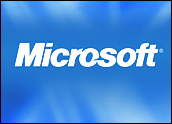
To accommodate the increased use of rich media ads by online marketers, Nielsen//NetRatings is modifying its media intelligence service, AdRelevance.
Among the changes:
- an update of delivery definitions to better standardize reporting;
- introduction of a new delivery type: expanding ad units; and
- segmentation of activity to better identify use of video in ads.
“Clients can now take apart ads that specifically contain video elements,” AdRelevance Product Manager Sally Krumholz told the E-Commerce Times.
Video Penetration
“They really couldn’t do that before. There’s a real question out there about … the penetration of video,” she added. “Who’s using video? Which advertisers are incorporating video in their campaigns?”
In the past, Nielsen was capturing that kind of data but wasn’t segmenting it. That will now change, Krumholz explained.
“It will help advertisers better understand what’s in play in the market,” she noted.
Balloon Ads
Nielsen also wanted to address growth in the use of ads that expand on a page when a Web site visitor interacts with them.
“They’re becoming increasingly common,” Krumholz said. “Before, there was only one vendor that offered this format. Now, pretty much across the board, every vendor offers expandable [ads].”
Nielsen has been reporting on rich media advertising since 2001, and the latest changes mark an evolutionary development in its AdRelevance service, according to Krumholz.
“They’re something we needed to do as a data supplier to stay as close in step as we possibly can with the market,” she observed.
Low on the Totem Pole
Nielsen’s AdRelevance changes reflect an awareness of the growth of rich media advertising in onlinemarketing campaigns. However, the technology itself still isn’t garnering as many eyeballs as other types of advertising.
In figures released by Nielsen for the week ending August 6, rich media ads accounted for only 1.2 percent of the roughly 57.6 million impressions delivered during the period.
At the top of the list for the time frame were compound image/text ads with more than 16 million impressions (27.9 percent), followed by sponsored search links with 14.6 million impressions (25.3 percent), standard gif/jpeg with 13.6 million impressions (23.7 percent), and Flash ads with 12.8 million (22 percent).
Nascent Technology
“Rich media usage is still in its infancy,” Peter Kim, president of Interpolls, a rich media vendor in Pasadena, Calif., told the E-Commerce Times. “There’s still a tremendous amount of room for growth.
“I think we’ll start to shift to rich media this year,” he said. “We’re going to see a significant increase because the industry is more aware of the benefits and value of the technology.
“In the past,” he continued, “one of the challenges was educating the industry and the market on what rich media was and the true benefits and best practices.”
Rich media goes beyond Flash banner ads or streaming video, according to Kim, to include an element of interactivity.
Better Click-Through
Rich media ads have significantly better click-through rates than more typical forms of online advertising, such as banner ads, he maintained.
Click-through rates for banner ads are well below 1 percent, he claimed, while rich media ads have rates ranging from 1 to 18 percent, depending on a number of factors such as format, publisher, placement and audience.
At the end of the day, the click-through rate for a rich media ad will always be higher than for a standard banner ad, Kim asserted.
ROI vs. Brand
Click-through, though, is less important to rich media vendors than it is to some of their competitors — like search engine advertisers, for example, who get paid by the click. That’s because rich media vendors get paid by the more traditional CPM, or cost per thousand, method of compensation.
Click-through pricing appeals to advertisers focused on return on investment, while rich media advertisers are more concerned with branding, Kim contended.
“To this point, rich media by marketers has been used for branding and awareness,” he said, “but now they’re realizing that they can tie a direct response piece into it, too.”













































Social Media
See all Social Media